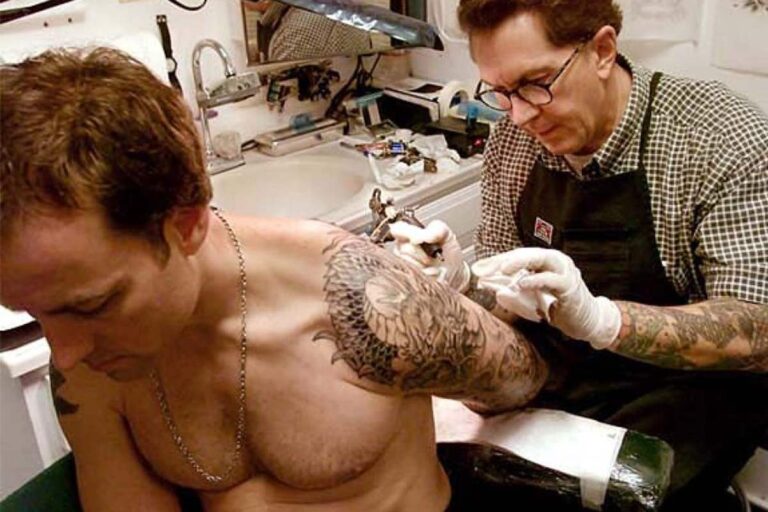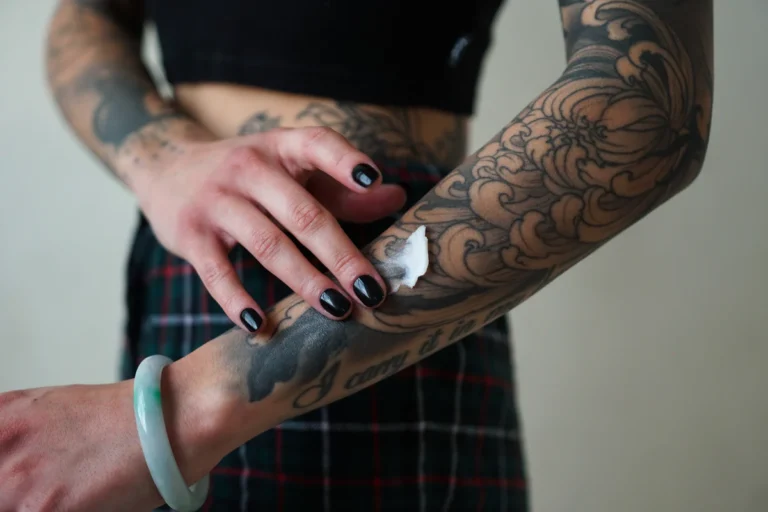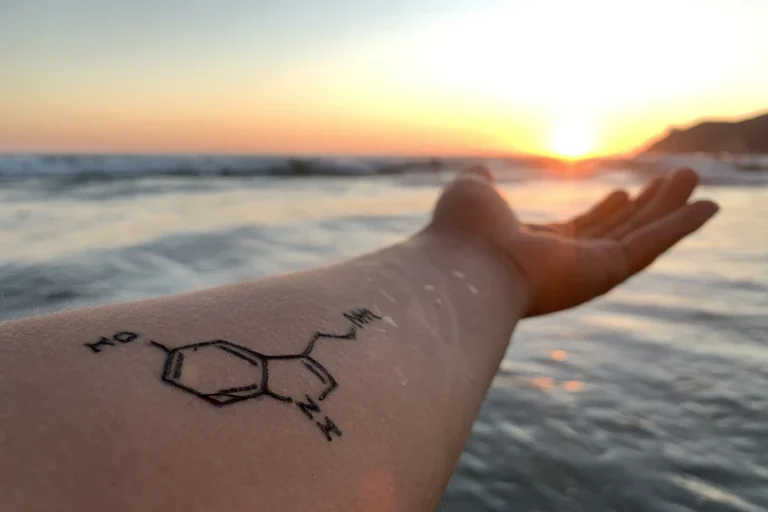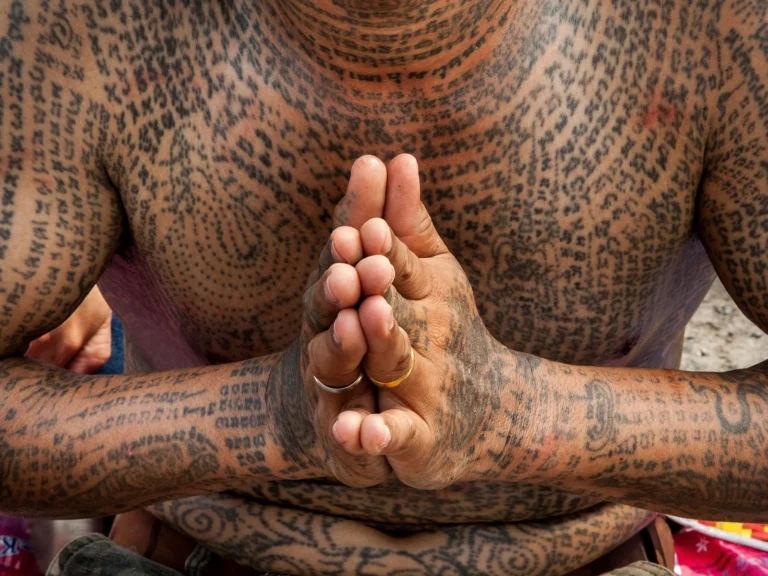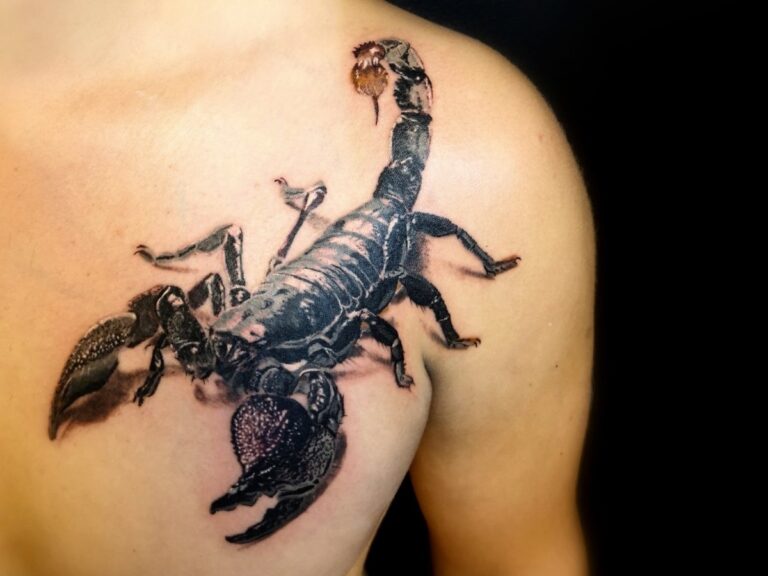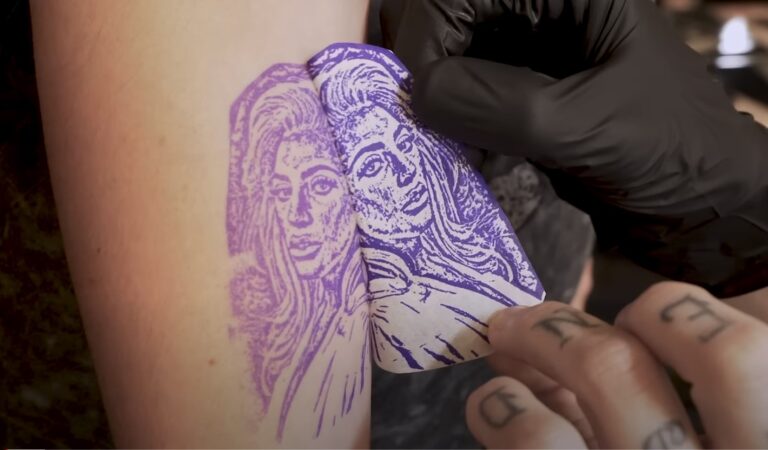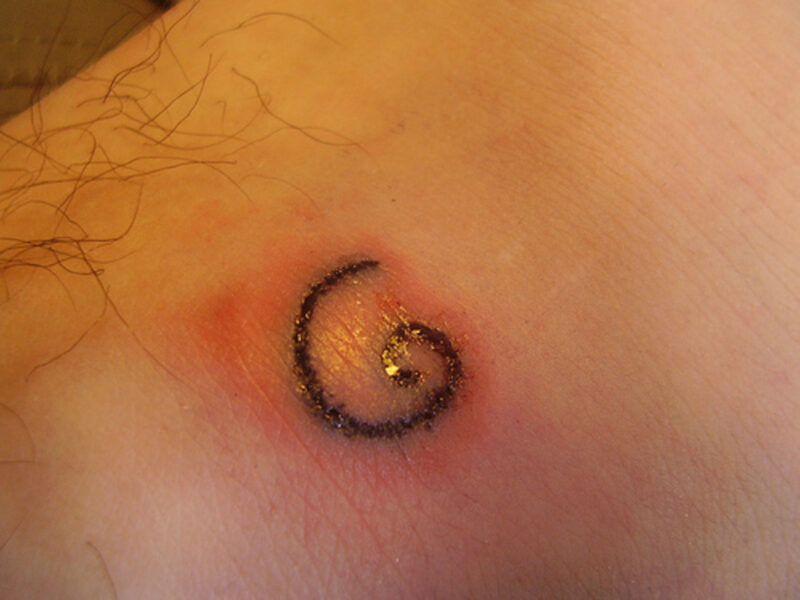Getting a tattoo is an exciting way to express yourself, but it’s important to remember that tattoos involve breaking the skin, which can sometimes lead to infections.
Recognizing the early signs of an infection is crucial for preventing more serious health issues
Let me tell you about the most important signs you need to be aware of.
7. Initial Redness and Swelling
After getting a tattoo, it is normal to experience some redness and swelling around the area.
The tattoo process involves repeatedly puncturing the skin with needles to inject ink, which naturally leads to two major problems:
- Irritation
- Inflammation
Typically, this redness and swelling should start to subside within a few days as the skin begins to heal.
Most people notice significant improvement within the first week, with the swelling decreasing and the redness fading as the healing process progresses.
If you notice that the redness and swelling persist beyond this initial period, it may be a sign of infection. Infected tattoos often remain red and swollen for an extended period, and the skin around the tattoo may feel hot to the touch, indicating inflammation.
6. Unusual Discharge
In the first few days after getting a tattoo, it is normal to see some clear liquid oozing from the tattooed area, and slight bleeding may also occur.
It is part of the body’s healing process. The presence of thick, yellowish, or greenish discharge, known as pus, is a cause for concern.
Pus is typically a sign of infection and indicates that bacteria have entered the tattooed area.
If you notice this type of discharge, it is crucial to keep the area clean and contact a healthcare professional immediately. Prompt treatment can prevent the infection from spreading and causing more severe health problems.
5. Persistent Pain
Experiencing some level of pain and tenderness in the tattooed area is expected as the skin heals.
This discomfort should gradually decrease over time as the body’s natural healing processes take effect. In the first few days after getting a tattoo, it’s normal to feel a mild to moderate level of pain, similar to a sunburn.
The initial pain and tenderness should start to subside. The body’s immune system works to repair the damaged tissue, and as new skin cells form and the area begins to heal, the discomfort should lessen.
Most people find that the pain significantly reduces within a week and continues to improve over the subsequent weeks. If the pain intensifies or persists beyond the initial healing period, it may indicate an infection.
Infected tattoos can cause continuous pain that does not improve or even worsen as time goes on.
Unlike the normal healing process, where pain diminishes, an infected tattoo will remain painful and might even become more painful over time.
4. Itchiness and Rash
Mild itching is a common part of the healing process for a new tattoo as the skin regenerates.
As your skin heals, the outer layers that were damaged by the tattoo needle begin to repair themselves, which can lead to an itchy sensation.
It’s important not to scratch the tattooed area, even though it might be tempting, as scratching can damage the skin and potentially introduce bacteria, leading to infection.
Extreme itchiness, the appearance of rashes, or bumpy skin around the tattoo are signs that something might be wrong. The development of a rash or bumpy skin texture around the tattooed area is another red flag.
These symptoms are not typical of the normal healing process and should be closely monitored. These symptoms can indicate an allergic reaction to the tattoo ink or an infection. Some people may have sensitivities or allergies to certain ingredients in the tattoo ink, which can trigger an immune response.
Allergic reactions can cause:
- Severe discomfort
- Swelling
- Redness
- Blister (rare)
- Hives (rare)
3. Fever and Chills
Developing a fever, experiencing chills, and sweating after getting a tattoo are significant concerns and potential indicators of a systemic infection.
These symptoms suggest that the body is fighting off an infection, and the immune response has spread beyond the localized tattooed area.
A fever is particularly worrying as it indicates that the infection might be spreading through your body, which can lead to more serious health issues if not addressed promptly.
If you experience these symptoms, it is crucial to seek immediate medical attention to receive appropriate treatment and prevent further complications.
2. Raised Bumps
The appearance of firm bumps, also known as granulomas, or a rash around the tattoo can be alarming.
Granulomas are small, raised areas that form when the body is trying to wall off foreign substances, such as tattoo ink, which it perceives as a threat.
Granulomas are often:
- Red
- Firm
- Slightly tender to the touch
They might appear shortly after getting the tattoo or could develop weeks or even months later.
These bumps can be a sign of an allergic reaction to the tattoo ink. Some individuals may have sensitivities to certain pigments or other components in the ink, leading to an immune response.
On the other side, granulomas can also be indicative of an infection. Bacteria introduced during the tattooing process or during the healing phase can cause localized infections that manifest as raised bumps.
1. Allergic Reactions
Allergic reactions to tattoo ink can manifest on the skin, like:
- Swelling
- Redness
- Blisters
- Lumps
These reactions occur because some individuals are sensitive to certain ingredients in the tattoo ink.
Over-the-counter anti-allergy medications, such as antihistamines, may help alleviate mild symptoms. If the allergic reaction is severe or if symptoms persist despite taking medication, it is important to see a doctor.
Persistent allergic reactions can lead to more serious skin conditions and may require professional medical treatment to manage effectively.
It is also advisable to inform your tattoo artist of any known allergies before getting a tattoo.
Related Posts:
- How To Choose the Right Animal Motif Tattoo for Your…
- Long-Term Tattoo Care Tips - How To Keep Your Ink Vibrant
- Top 15 Unique Minimalistic Tattoo Ideas for Your Next Ink
- 34 Best Watercolor Tattoo Designs - Find Your Style!
- 10 Tips on How To Protect Your Tattoos from the Sun
- Tattoo Pain Chart & Tattoo Pain Guide


